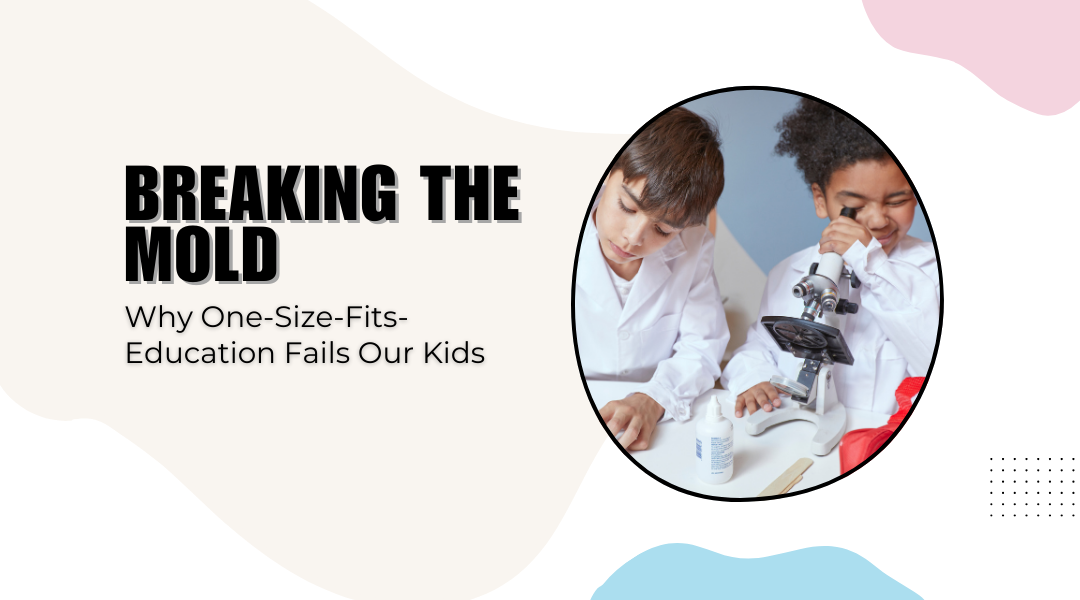Let me tell you about Sarah, a bright-eyed 10-year-old who used to dread math class. While her classmates breezed through multiplication tables, Sarah would shrink in her seat, convinced she was “bad at math.” That changed when our school piloted a radical approach – we ditched the textbooks for measuring tape and baking ingredients. Suddenly, fractions made sense when she was doubling cookie recipes. Her confidence didn’t just grow – it exploded.
Then budget cuts hit. The program vanished. Sarah went back to staring at workbook pages, her progress evaporating like morning dew. This isn’t just Sarah’s story – it’s happening in classrooms everywhere.
The Factory Model Problem
Our education system was designed during the Industrial Revolution, and it shows. Picture this:
- The Assembly Line Approach
- 30 kids
- 1 teacher
- Identical lessons
- Fixed timelines
It’s like forcing every child to wear the same sized shoes. Some are cramped. Others are swimming in them. Nobody’s comfortable.
Dr. Michael Horn from Harvard puts it bluntly: “We’re trying to prepare kids for 2030 using a system from 1930.” The results?
- 67% of high schoolers report feeling disengaged (Gallup)
- 1 in 3 students develops math anxiety by age 10 (Stanford study)
- Teacher burnout at record highs (National Education Association)
When Personalization Works
Take Finland’s experiment with “phenomenon-based learning.” For one month each year, students ditch subjects to study real-world topics. A class might:
- Run a pop-up restaurant (math + economics + teamwork)
- Document neighborhood history (writing + research + interviewing)
- Build sustainable gardens (science + environmental studies)
The outcome? Finnish teens consistently rank among the world’s top performers.
Closer to home, a Brooklyn school transformed struggling readers by:
- Matching books to personal interests (sports, dinosaurs, graphic novels)
- Using audiobooks for auditory learners
- Creating comic strips to demonstrate comprehension
Within a year, reading scores jumped 40%.
The Roadblocks to Change
Why aren’t all schools doing this? The hurdles are real:
- Standardized Testing – Teachers report spending 30% of class time prepping for tests
- Overcrowding – The average U.S. classroom has 24 students (NCES)
- Teacher Training – Most education degrees still emphasize traditional methods
What Parents Can Do Now
You don’t have to wait for systemic change:
- Spotlight Strengths
- If your child struggles with worksheets but excels at building LEGO sets, they’re demonstrating spatial intelligence
- Demand Flexibility
- Ask teachers: “Can my child demonstrate this concept differently?”
- Think Outside School
- Museums, coding camps, even video games (Minecraft teaches geometry!) can reinforce learning
The Future We Need
Imagine schools where:
- Progress isn’t measured in letter grades but mastered skills
- Classrooms have multiple “learning zones” for different styles
- Teachers act as guides rather than lecturers
This isn’t fantasy – schools from New Hampshire to New Zealand are proving it works.
Sarah’s story didn’t end when the program closed. Her parents found a tutor who used board games to teach math. Today, she’s studying engineering.
Every child deserves that chance. The question isn’t whether we can personalize education – it’s whether we can afford not to.
